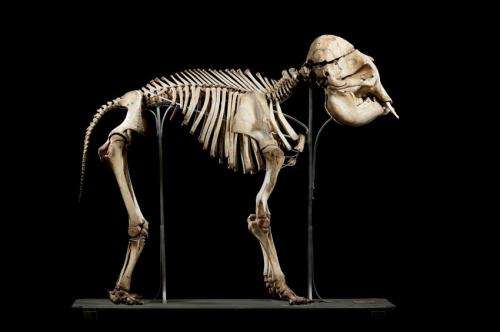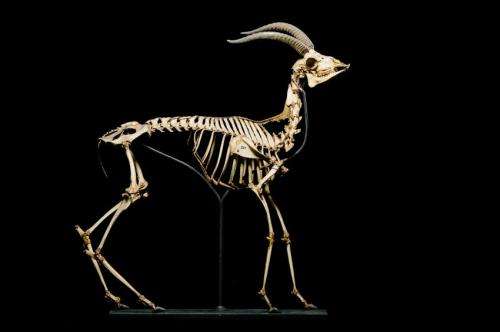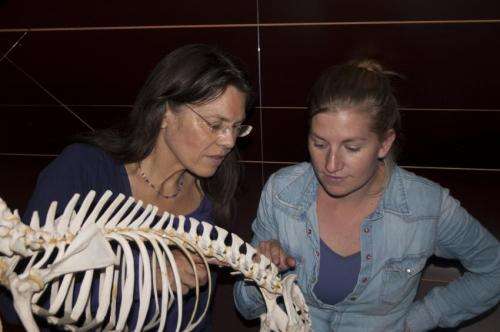How speed restricts evolutionary change of the vertebral column in mammals

One of the riddles of mammal evolution explained: the strong conservation of the number of trunk vertebrae. Researchers of the Naturalis Biodiversity Center and the University of Utah show that this conservation is probably due to the essential role of speed and agility in survival of fast running mammals.
They measured variation in vertebrae of 774 individual mammal skeletons of both fast and slow running species. The researchers found that a combination of developmental and biomechanical problems prevents evolutionary change in the number of trunk vertebrae in fast running and agile mammals. In contrast, these problems barely affect slow and sturdy mammals. The study will appear next Monday, 14 July 2014 in PNAS.
The mammal vertebral column is highly variable among species, reflecting adaptations to a wide range of lifestyles, from burrowing in moles to flying in bats. Yet, as a rule, the number of trunk vertebrae varies little between most mammal species. The vertebral column and its high evolutionary potential is considered to be of central importance for the evolution of vertebrates, which is why the constancy is both puzzling and important. The authors propose, on biomechanical and developmental grounds that evolutionary change is virtually impossible in fast running and agile mammals, but only marginally affects slow and sturdy mammals. The rationale is that several mutations are necessary to change the number of trunk vertebrae, with single mutations leading to irregularly shaped transitional lumbosacral vertebrae that are incompletely and asymmetrically fused to the sacrum. These irregular lumbosacral joints reduce flexibility, thus severely hampering running and jumping. Their observations indeed show that selection against these initial changes is strong in fast and agile mammals and weak in slower and sturdier ones.

In total, 774 skeletons of 90 different species were analysed. The skeletons belonged to collections of 9 European natural history museums including Naturalis Biodiversity Center, Leiden.
"The stiffness of the back of a mammal is key to whether evolutionary change is possible or not", said Frietson Galis, one of the authors of the study. "`the locomotion of slow mammals with a stiff back is only marginally affected by irregular lumbosacral joints, but for fast running mammals such joints are fatal " continued Clara ten Broek another author of the study.
"A combination of developmental, biomechanical and evolutionary insights and a large dataset were necessary to solve this puzzle of mammal evolution", said Frietson Galis.

"The stiffness of the back of a mammal is key to whether evolutionary change is possible or not", said Frietson Galis, researcher at Naturalis Biodiversity Center and one of the authors of the study. "the locomotion of slow mammals with a stiff back is only marginally affected by irregular lumbosacral joints, but for fast running mammals such joints are fatal" continued Clara ten Broek another author of the study.
"A combination of developmental, biomechanical and evolutionary insights and a large dataset were necessary to solve this puzzle of mammal evolution", said Frietson Galis.
More information: Fast running restricts evolutionary change of the vertebral column in mammals, PNAS, www.pnas.org/cgi/doi/10.1073/pnas.1401392111
Journal information: Proceedings of the National Academy of Sciences
Provided by Naturalis Biodiversity Center



















